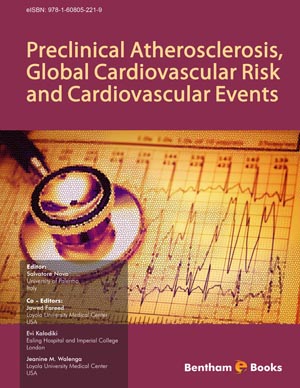Abstract
The “preclinical ATS” indicates that "something is beginning to change" in the vascular wall. Currently, signs of preclinical ATS can be investigated through non-invasive approaches. The US evaluation of the Intima-Media Thickness (IMT) and / or asymptomatic plaque of carotid arteries is a high sensitive and specific method. The IMT is not only the expression of ageing but also a specific sign of widespread atherosclerosis. The ankle blood pressure should be slightly higher than the upper arm pressure (Ankle-Brachial Index > 1). Measurement of an ABI < 0.9 indicates restricted flow in the ilio-femoro-popliteal arteries. Currently, the "Endothelial Dysfunction") is evaluable by the flow-mediated dilatation (FMD) in the brachial artery. An impaired FMD is related to some traditional RF. There is a significant negative correlation between FMD and IMT. Finally, the coronary calcium (independent predictor of CV death) can be estimated by computerized tomography and expressed as Coronary Calcium Score. The lipidic plaques can be distinguished from the fibrous ones and from calcium amounts through the levels of attenuation (Hounsfield units). The research of coronary lesions in patients with asymptomatic carotid plaque and in obese children with a cluster of RF could be a promising application in order to perform aggressive prevention.
Keywords: Carotid intima-media thickness, asymptomatic carotid plaque, flow mediated vasodilation, Ankle Brachial Index (ABI), arterial stiffness, coronary computed tomography, coronary calcium score.






















